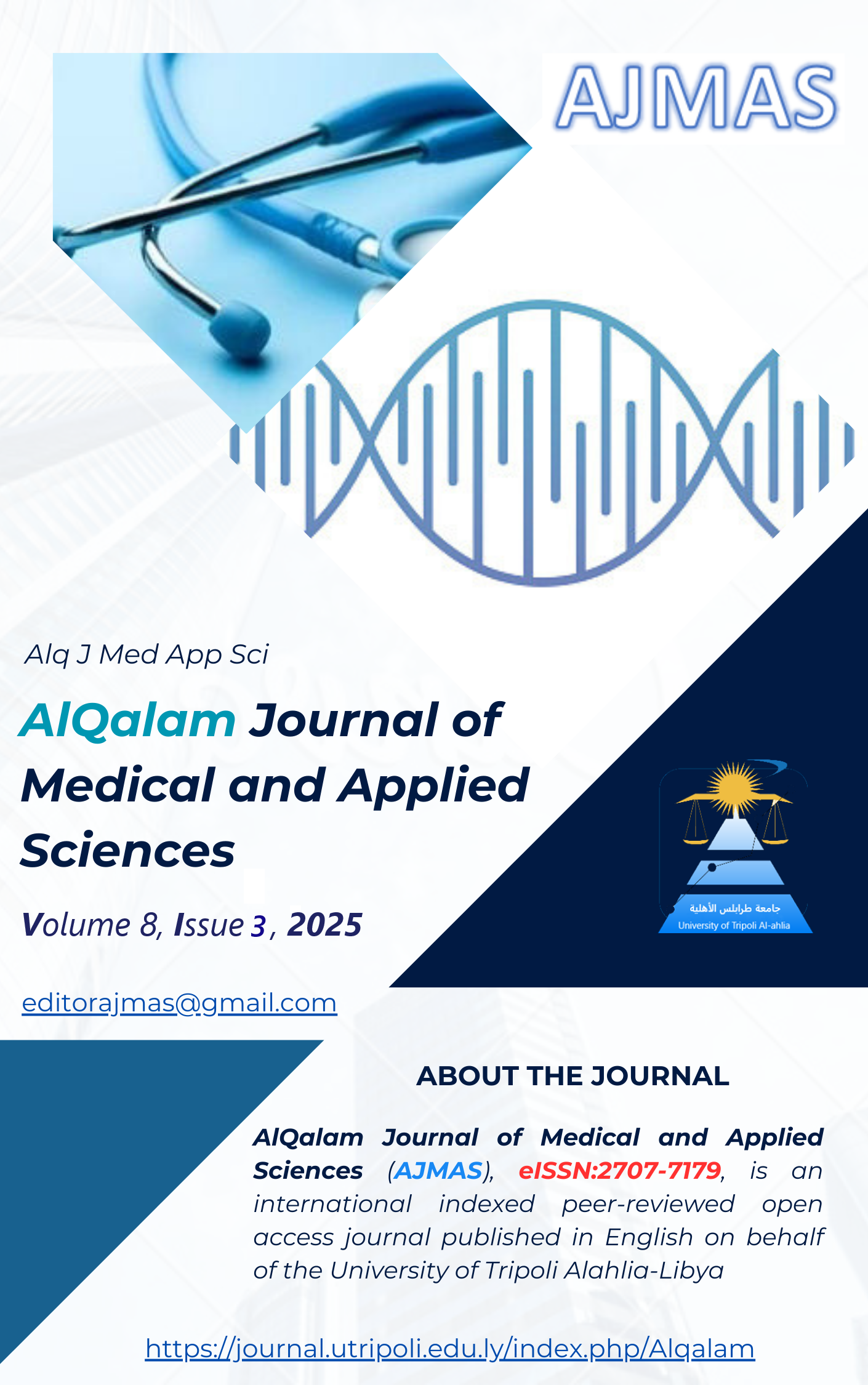Prevalence of Methicillin-Resistant Staphylococcus aureus and Their Antibiotic Susceptibility Test Among Diabetic Foot Infection Patients in Misurata City, Libya
DOI:
https://doi.org/10.54361/ajmas.258348Keywords:
Diabetic Foot Infection, Antibiotic Resistance, MRSA, MSSA.Abstract
Diabetic foot infection (DFI) is a serious and common complication of diabetes mellitus. This study aimed to determine the prevalence of Methicillin-Resistant Staphylococcus aureus (MRSA) and assess the antibiotic resistance patterns of these isolates among DFIs. A total of 40 samples were collected, isolated, and identified using standard microbiological procedures and biochemical tests. Antibiotic susceptibility testing was carried out using the Disc Diffusion Method. The most common bacterial species detected was Acinetobacter spp. (30%), followed by Staphylococcus aureus (17.5%), Pseudomonas aeruginosa (17.5%), and Klebsiella spp. (15%), CONS (Coagulase-Negative Staphylococci) (15%), and Proteus spp. (5%). Out of the 7 isolates of S. aureus, 71.4% were MRSA, while 28.6% were MSSA (Methicillin-Sensitive Staphylococcus aureus). MRSA isolates showed a high rate of resistance to both AMP (Ampicillin) and AMC (Amoxicillin) (100%), followed by resistance to cefotaxime (80%) and ciprofloxacin (60%).
Downloads
Published
How to Cite
Issue
Section
License
Copyright (c) 2025 Mohanned Al-Washaish, Nabil Elmahaishi, Asma Abu Zayan, Eman Al-Zawawi, Elham Al-Maliki

This work is licensed under a Creative Commons Attribution 4.0 International License.















